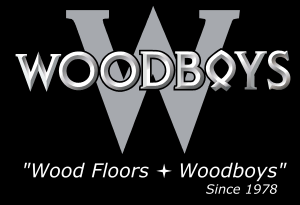Blog
Installation Methods for Hardwood Flooring
When it comes to laying your hardwood floor, you have more than one option. Most people envision a solid wood floor which is traditionally nailed down, but other techniques of hardwood floor installation are worth considering. Whether you want to do it yourself or hire a team of professionals like the crews Woodboys works with, you should know the ins and outs of choosing the right installation method.
If you want to learn more about how to install your new hardwood floors, here is our quick guide to answer your most pressing questions.
Nail Down or Staple Down Flooring
First, let’s take a closer look at the most traditional type of hardwood floor installation. If your home is built over a crawl space with an OSB or plywood subfloor (as opposed to particle board), then nailing down a solid hardwood or stapling an engineered wood floor might be the most advantageous solution.
The installer will roll out a 15 lb. felt paper with a moisture vapor barrier between the subfloor and the new flooring and then fasten the wood floor in place using the appropriate nails/staples according to the manufacturer’s installation instructions.
This gives you the most solid feel to the floor beneath your feet and has very little sound associated with it when you walk on it. Plus, the cost of the felt paper is relatively inexpensive compared to adhesive for glue-down applications or a pad for a floating installation. This means that you can often install a floor for less overall cost compared to any other installation method.
Floating Floor Installation
If you have a particle board subfloor, floating is often the most economical method to select. Particle board is incapable of holding the fasteners required by the nail/staple down method and would have to be replaced with plywood if flooring is not floated, adding expense to your overall job. This also means that you will not be able to have solid wood flooring which can only be nailed down.
You will be looking at a floating installation of engineered hardwood instead.
Engineered hardwood can be installed in a couple of different ways depending on your situation. If you have a concrete subfloor, you may be able to glue it down as well (which we’ll look at in more detail in a moment).
First, many people are familiar with floating click-lock engineered wood flooring which folds together and snaps into place. This is often the easiest method for a homeowner who is determined to do it themselves as each board goes neatly into place. However, it can limit your available options when it comes to the style and species you want to select.
Instead, you may choose to install tongue-and-groove engineered hardwood options as floating floors. You will need to use an adhesive to hold each board together, but this is easily applied with glue that comes in bottles like the tongue & groove adhesive available at Woodboys.
Floating floors are a little bit softer underfoot compared to a nail-down plank or even a glue-down wood floor installation. If you have knee or back issues, you may prefer the feel of a floating floor even if it does put off a little more sound than other hardwood flooring installation methods. A quality pad with a moisture vapor barrier underneath a floating floor can help you minimize this sound.
Glue-Down Floor Installation
Last but not least, you may want to consider gluing down your hardwood floor if you have concrete subfloors. This will give you a feel most similar to a nail-down hardwood plank and minimize the hollow sound of a floating floor. It will not have any of the softness of a floating floor. Instead, it will feel strong and sturdy underfoot.
There are a couple of advantages of glue-down floors beyond just their sturdy feel though. You may opt to use an adhesive that has a stronger moisture barrier than you would get with a floating floor pad or a 15 lb. felt paper, even if they have a moisture vapor barrier built in. It is normal for moisture to rise through the concrete, but most people have relatively low levels that won’t cause long-term damage to the floor.
If you have high moisture levels (measured on the day of installation), you may need a stronger adhesive with a moisture barrier and possibly a concrete sealer that gets applied to your concrete subfloor prior to your flooring being installed.
Experience Them All at Woodboys
Still not sure what hardwood flooring installation method is right for you? Visit our Ladson showroom to experience an example of all three types of installations for yourself. An experienced flooring specialist can walk you through the benefits of every method and help you settle on what is perfect for your home. Give us a call today and schedule a free in-home estimate and we can come out to your home to assess your unique situation!





Leave a reply